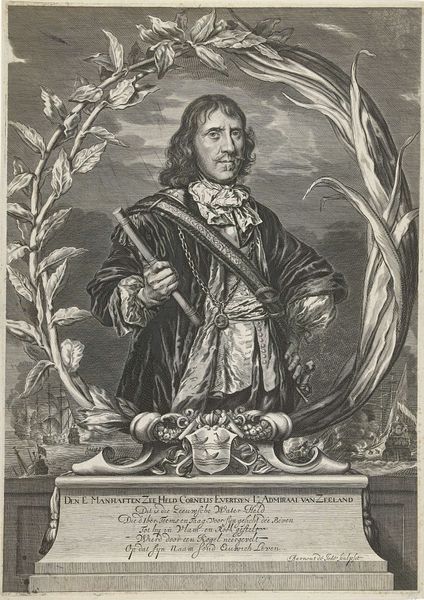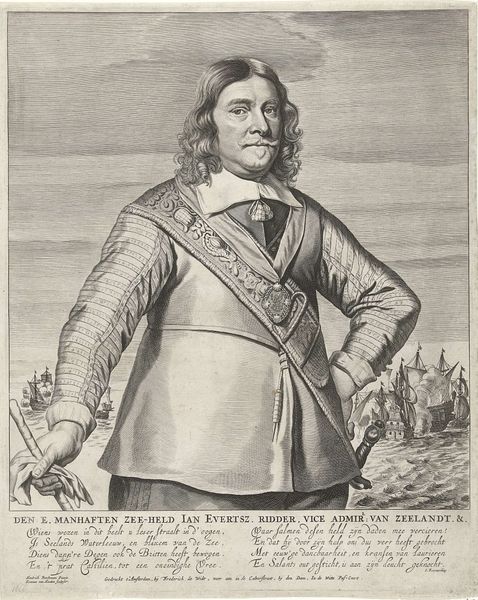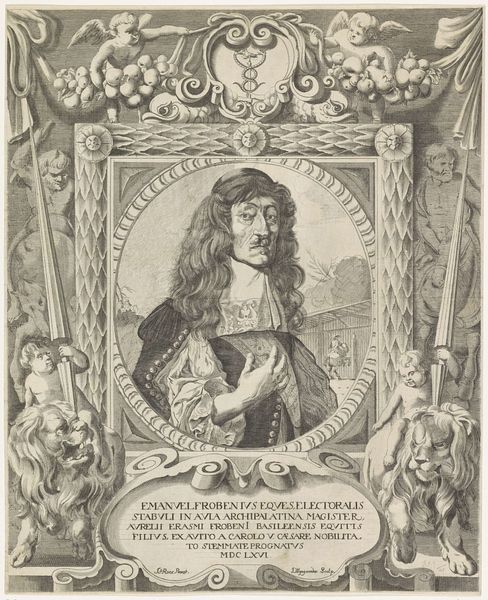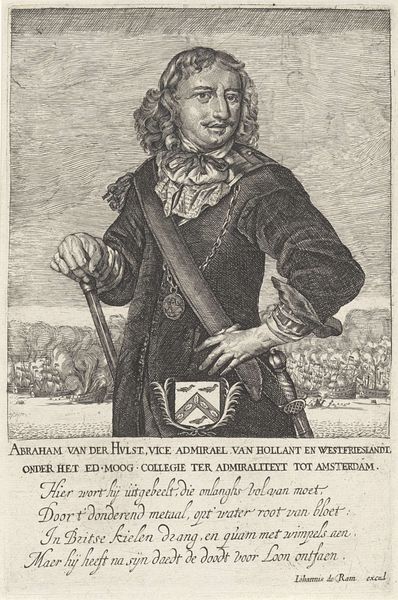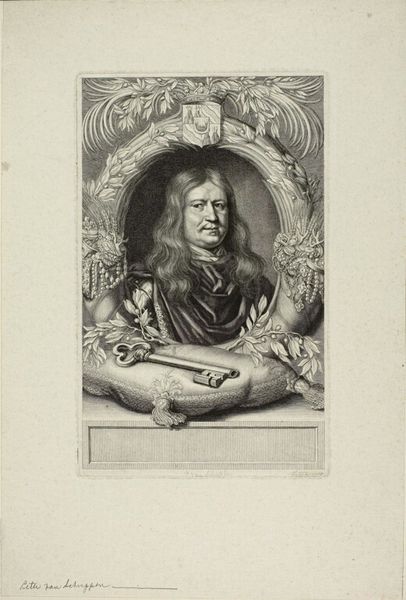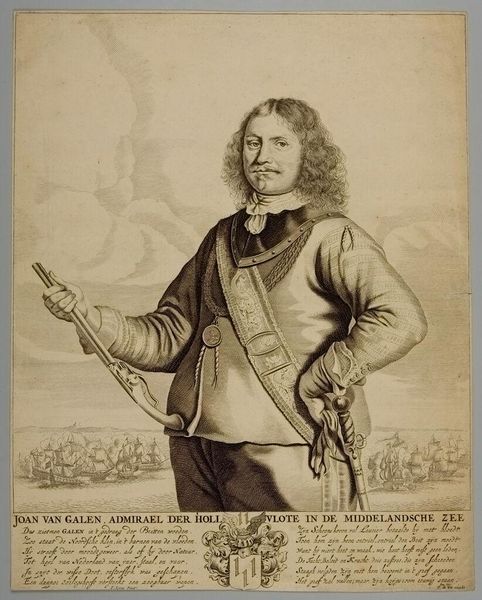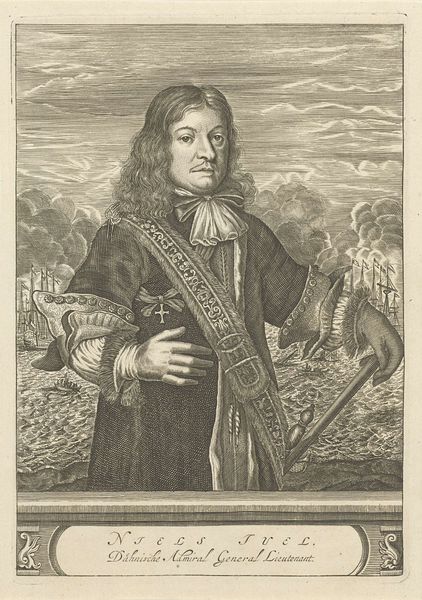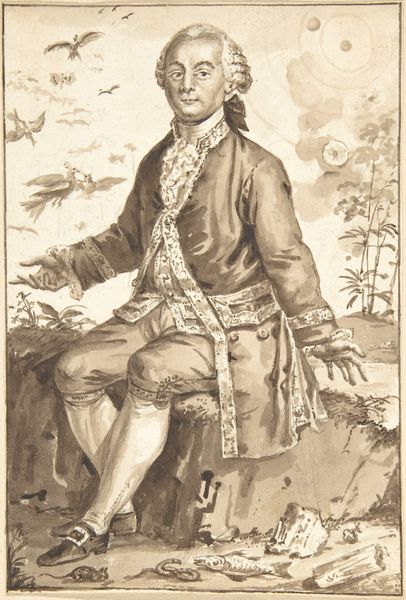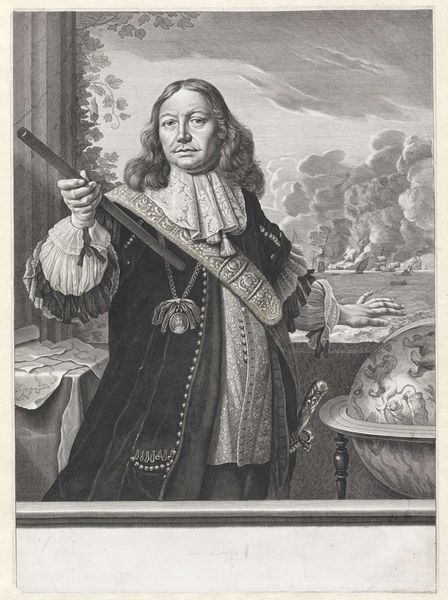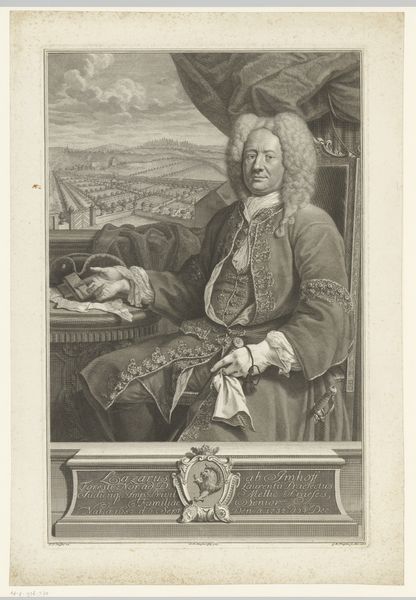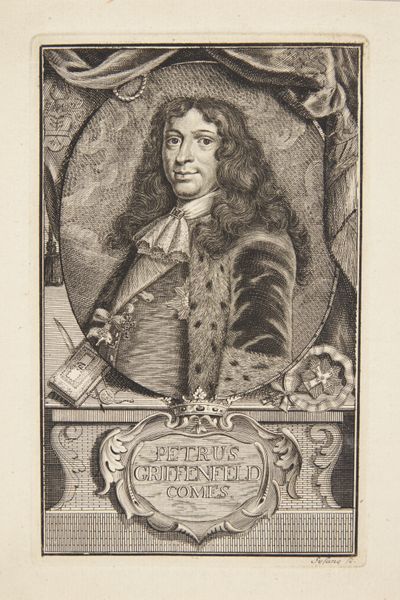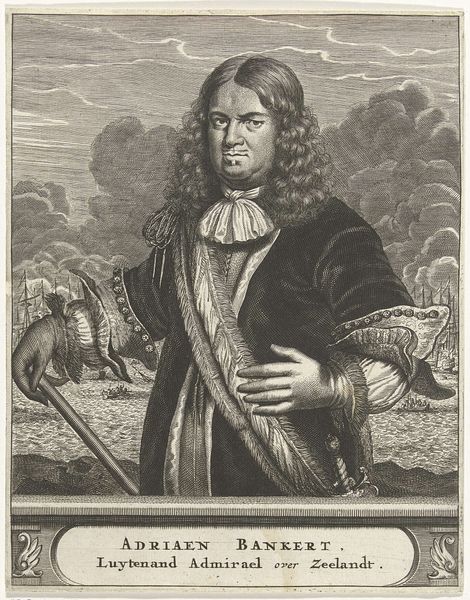
engraving
#
portrait
#
baroque
#
dutch-golden-age
#
history-painting
#
engraving
Dimensions: height 476 mm, width 343 mm
Copyright: Rijks Museum: Open Domain
Curator: Here we have Arnold de Jode's portrait of Johan Evertsen, an engraving likely created before 1669, placing it firmly in the Dutch Golden Age. What strikes you first? Editor: Immediately, the construction itself. It's so formal and almost imposing, right? Look at the weight of that laurel wreath, contrasting with Evertsen’s direct gaze. It feels very deliberate in its attempt to communicate power and status in this Dutch historical context. Curator: Precisely! De Jode’s process is intriguing here. Engraving demanded a highly skilled hand, carefully translating texture and form with fine lines on a metal plate. You can see it in the detailing of the lace collar and the way light falls across his coat. Editor: And those details tell a story. Consider Evertsen’s role: a celebrated admiral. That scroll he holds – perhaps a map or orders? – speaks directly to his authority in maritime affairs, deeply linked to the economic and colonial expansions of the Dutch Republic at the time. Curator: It’s all so meticulously rendered. And the addition of the ships in the background. I would like to point that the symbolic inclusion of ships as signs of ongoing imperial trade and also violence, which needs to be acknowledged as part of any honest conversation about this portrait. Editor: I agree, and beyond the surface, we must acknowledge the labor involved. The engraver's skill wasn't simply technical. It was instrumental in shaping the image of authority, participating in the ongoing narratives of power, Dutch nationalism, and early-modern global economies. Whose stories were deemed worth recording, and whose were deliberately erased from this record? Curator: Good point! The portrait serves as a material testament to Dutch mercantile prowess, the power relations enacted through naval prowess, and the creation of a national hero—while carefully constructing narratives for public consumption. Editor: This engraving compels us to ask how identities and histories were, and still are, being carefully assembled. That’s a conversation worth having about power, representation, and historical narratives, isn’t it? Curator: Indeed, seeing it through this lens encourages questioning the choices inherent in visual representations, leading to a deeper understanding. Editor: Definitely something that brings greater resonance and more diverse perspectives.
Comments
No comments
Be the first to comment and join the conversation on the ultimate creative platform.
